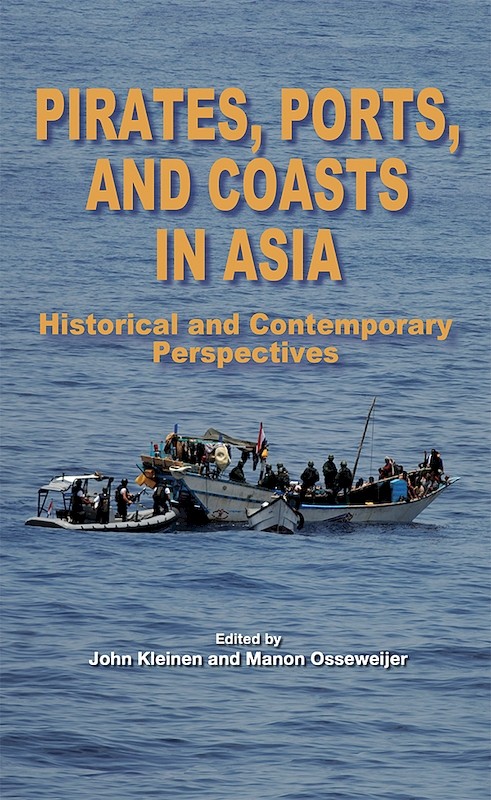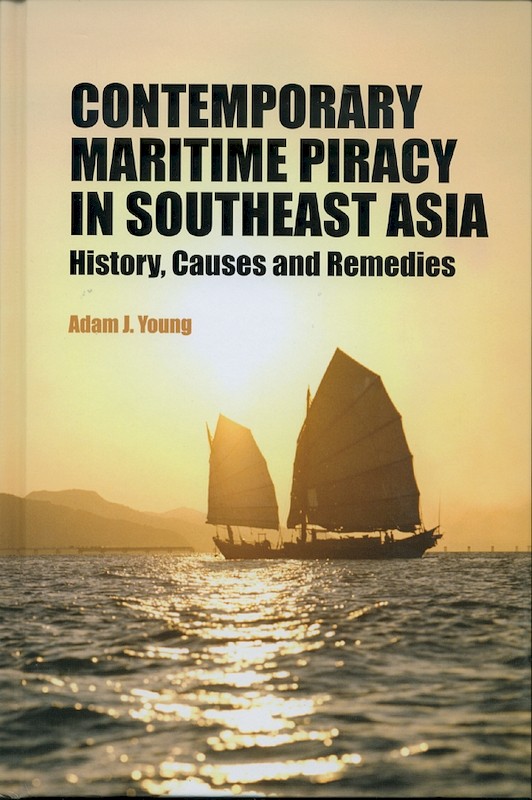Pirates, Ports, and Coasts in Asia: Historical and Contemporary Perspectives

Reviews
"There are several unifying points which nearly all of the contributions highlight and which the introductory essays nicely bring into focus. In their introduction, the editors argue that the problem of contemporary piracy in Asia needs to be studied from a historical perspective and should not be studied in isolation from the larger histories of the coastal spaces in which piratical acts often taken place. Furthermore, piracy and maritime violence more generally must be examined within the complex interrelationship of local and regional trade networks, politics, and cultural traditions. Velthoen's essay on Sulawesi and Knapp's study of the Papuan areas, for example, demonstrate the importance of regional politics and trading patterns in understanding the rise, spread, and decline of maritime raiding in the Indonesian archipelago. The problem of defining piracy is an additional important theme that surfaces throughout the essays in this volume. Michael Pearson's introductory essay clearly lays out the difficulty inherent in defining the various forms of maritime violence that were and often still are lumped under the label of piracy. Historically, what was termed piracy, who were deemed a pirate, and which groups participated in piratical acts varied depending on whose interests were at stake and even according to seasonal weather patterns. Indeed, even today the definition of piracy varies according to which international organization or court of law you consult. Nearly all of the essays included in the book touch on this important issue, reminding us that where colonial sources labelled any maritime activity inimical to their trade interests as piracy or smuggling, historians today need to be more critical of our sources and cautious in our application of such loaded terms. Overall, Pirates, Ports and Coasts in Asia is a valuable contribution to the study of piracy, as well as to maritime history more generally" (International Journal of Maritime History).
"Pirates, Ports, and Coasts in Asia is an important new contribution to the literature on piracy in Asian seas. As the title suggests, the authors were looking to go beyond an examination of piracy wholly on its own, and sought instead to link predation on the high seas to the maritime littoral in general, and to sea-based cities in particular, in their analysis. The thirteen chapters in the book are united in keeping the focus of attention on sea-strand relations, and one never seems to be too far from the other in the three hundred pages that make up this book. This in itself is an innovation of sorts, as many earlier attempts to deal with piracy in Asia have dwelt too much on the high seas and not enough (perhaps) on the coasts that supply people, ships, and material to make piracy possible in the adjacent waterways" (Southeast Asian Studies).
About the publication
Contents
-
Pirates, Ports, and Coasts in Asia: Historical and Contemporary Perspectives
[Whole Publication, ISBN: 9789814279116] -
Preliminary pages
- PART I: INTRODUCTION
-
1. Pirates, Ports, and Coasts in Asia, by John Kleinen, Manon Osseweijer, contributors
-
2. Piracy in Asian Waters: Problems of Definition, by Michael Pearson, contributor
- PART II: EAST ASIA
-
3. Giang Binh: Pirate Haven and Black Market on the Sino-Vietnamese Frontier, 17801802, by Robert Antony, contributor
-
4. Tonkin Rear for China Front: The Dutch East India Companys Strategy for the North-Eastern Vietnamese Ports in the 1660s, by Hoang Anh Tuan, contributor
-
5. South Fujian the Disputed Coast, Power and Counter-power, by Paola Calanca, contributor
-
6. Maritime Piracy through a Barbarian Lens: Punishment and Representation (the S.S. Namoa Hijack Case, [189091]), by John Kleinen, contributor
- PART III: SOUTHEAST ASIA
-
7. Violence and Armed Robbery in Indonesian Seas, by Adrian B Lapian, contributor
-
8. Robbers and Traders: Papuan Piracy in the Seventeenth Century, by Gerrit Knaap, contributor
-
9. The Port of Jolo: International Trade and Slave Raiding, by James Warren, contributor
-
10. Pirates in the Periphery: Eastern Sulawesi 18201905, by Esther Velthoen, contributor
-
11. Suppressing Piracy in Asia: Decolonization and International Relations in a Maritime Border Region (the Sulu Sea), 195963, by Stefan Eklof Amirell, contributor
-
12. Contemporary Maritime Piracy in the Waters off Semporna, Sabah, by Carolin Liss, contributor
-
13. Piracy in Contemporary Sulu: An Ethnographical Case Study, by Ikuya Tokoro, contributor
-
Index






